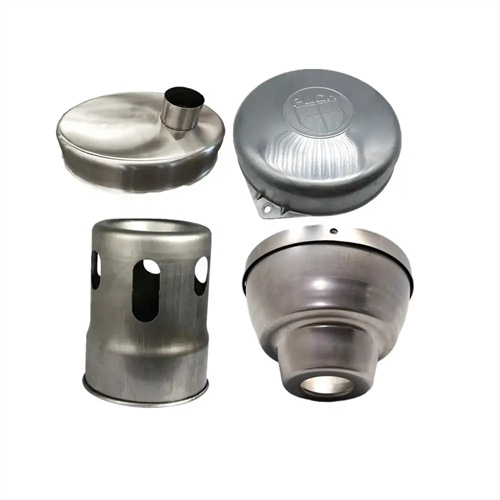Blanking die unloading device
The blanking die unloading device is a crucial component for ensuring a continuous blanking process. Its primary function is to remove the workpiece or scrap material from the punch after each punching cycle, preventing it from adhering to the punch and impacting the next punching cycle. The performance of the unloading device is directly related to production efficiency and the surface quality of the blanked parts. The design requires selecting the appropriate unloading method and structural parameters based on material thickness, part shape, production batch, and die structure to ensure smooth, reliable unloading without damaging the workpiece surface. Whether using simple manual unloading or complex automatic unloading systems, the core goal is to achieve efficient and damage-free unloading.

Based on their power source, blanking die unloading devices can be categorized into three main types: rigid, elastic, and pneumatic. Each type has distinct characteristics and applications. Rigid unloading devices, consisting of a stripper plate and screws, rely on the return force of the press slide to achieve unloading. They offer a simple structure and high unloading force, making them suitable for blanking sheet metal thicker than 1mm, particularly thick sheet metal and workpieces with simple shapes. Elastic unloading devices utilize the elastic force of a spring or rubber to push the stripper plate, providing a gentle, cushioning force. They are suitable for thin sheet metal less than 1mm thick and for punching parts requiring high precision, effectively preventing workpiece deformation. Pneumatic unloading devices utilize compressed air to drive a cylinder for unloading, offering fast response and adjustable unloading force. They are suitable for highly automated progressive dies and large blanking dies, and are particularly well-suited for workpieces requiring high surface finish, avoiding scratches caused by mechanical contact.

The structural design of the unloading device must focus on the shape, size, clearance between the unloading plate and the punch, and the distribution of the unloading force. The shape of the unloading plate should match the distribution of the punch. For multi-punch blanking dies, the unloading plate must cover the working area of all punches to ensure that each punch can be effectively unloaded. The thickness of the unloading plate must be determined according to the size of the unloading force, generally 15-30mm, to ensure sufficient rigidity and avoid deformation. The clearance between the unloading plate and the punch is a key parameter. If it is too large, reliable unloading is impossible, and if it is too small, friction and wear will increase. It is usually 0.05-0.1mm. For precision blanking dies, the clearance can be reduced to 0.01-0.03mm. The distribution of the unloading force should be uniform. By rationally arranging the positions of springs, rubber or cylinders, the forces acting on each part of the unloading plate can be consistent to prevent deformation of the workpiece due to uneven force.

In punching dies with special structures, the unloading device requires targeted design. For example, in small-hole punching dies, due to the slender punch, the unloading device must also have a guiding function, using a sheathed unloading plate to both unload the material and protect the punch from bending. In punching dies for special-shaped parts, the unloading plate’s contour must be consistent with the workpiece shape, and the unloading force must be appropriately increased at sharp corners to prevent waste material from sticking. In continuous dies, the unloading device must be coordinated with the feeding mechanism, typically using a floating unloading plate that is lifted during feeding and pressed during punching to ensure smooth feeding and reliable unloading. In addition, for punching parts with flanges or curved surfaces, the unloading device must be designed to fit the workpiece contour, increasing the contact area and improving unloading stability.

The commissioning and maintenance of the unloading device are crucial to ensuring its performance. During installation, it is necessary to ensure that the unloading plate is parallel to the upper plane of the die, and the parallelism error does not exceed 0.02mm/100mm. Otherwise, it will cause uneven unloading or deformation of the workpiece; the spring or rubber of the elastic unloading device needs to be pre-compressed a certain amount, generally 15%-20% of the free length, to ensure sufficient initial unloading force. During use, the working condition of the unloading device must be checked regularly, such as whether the spring has fatigue failure, whether the unloading plate is worn, whether the fitting clearance is too large, etc., and damaged parts must be replaced in time. For pneumatic unloading devices, the air circuit must be cleaned regularly to prevent impurities from clogging and causing malfunction. Through scientific design and careful maintenance, the unloading device can always maintain a good working condition, providing a guarantee for efficient and high-quality blanking production.
